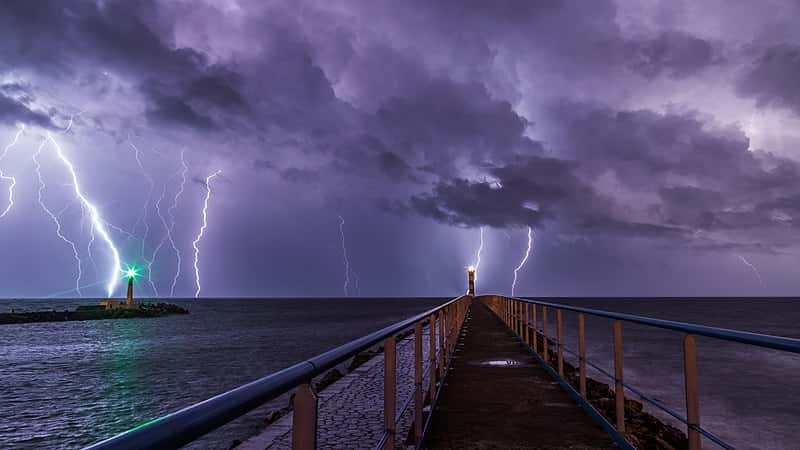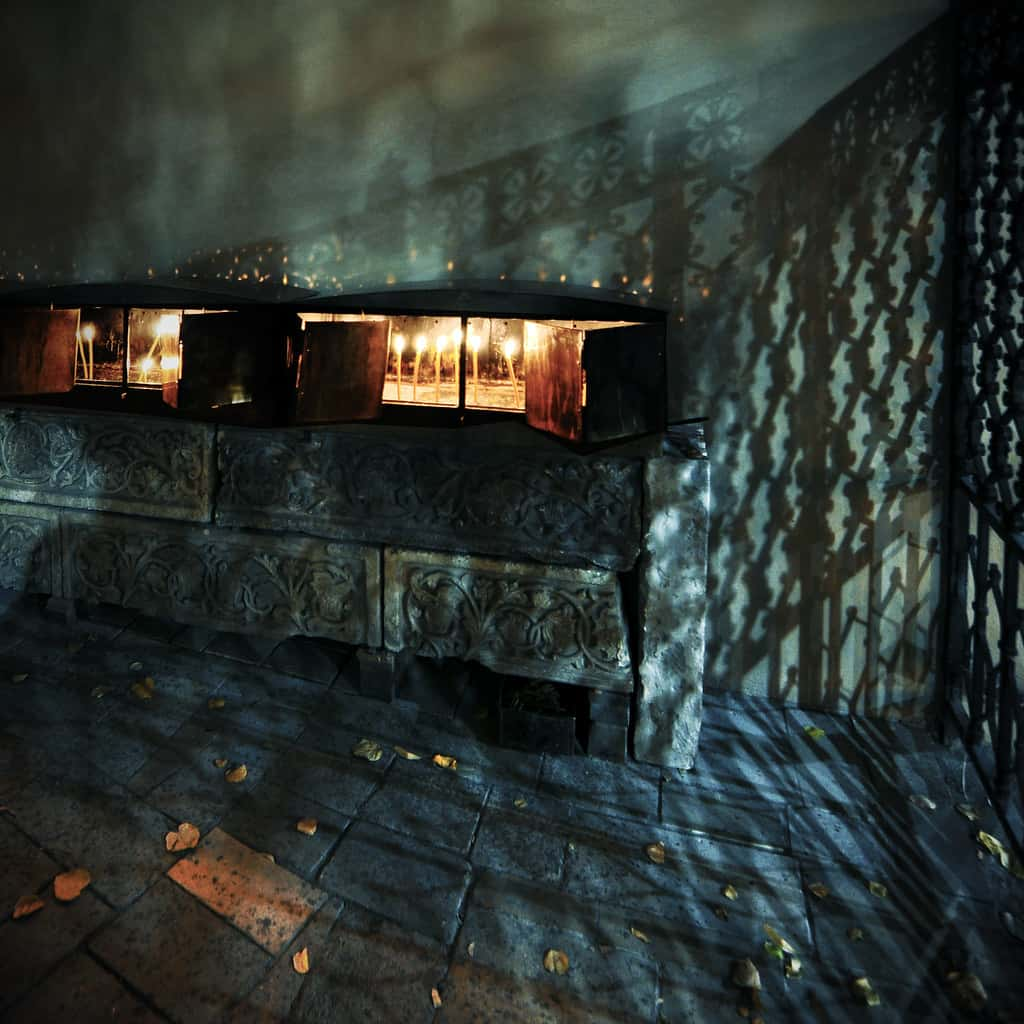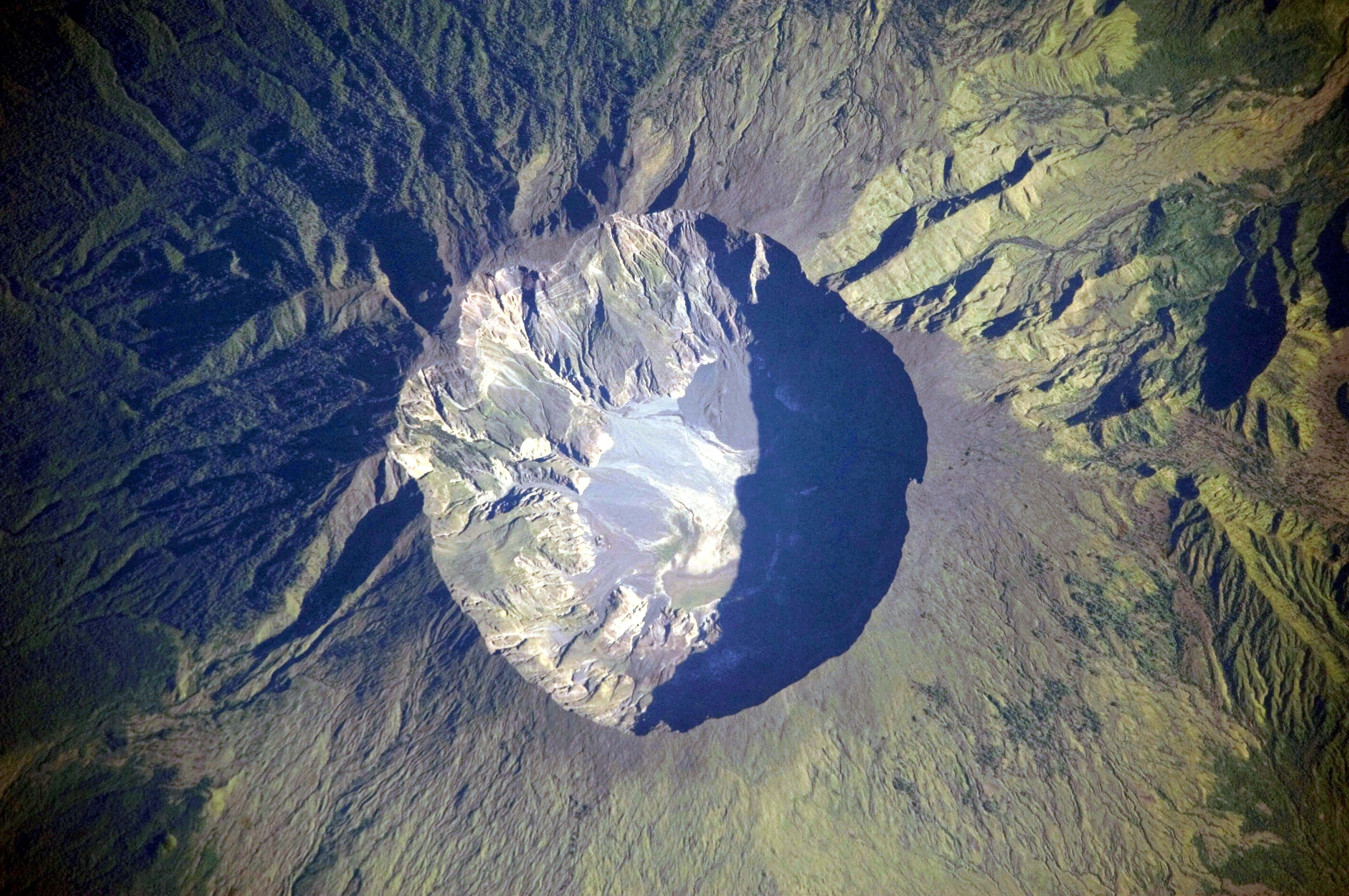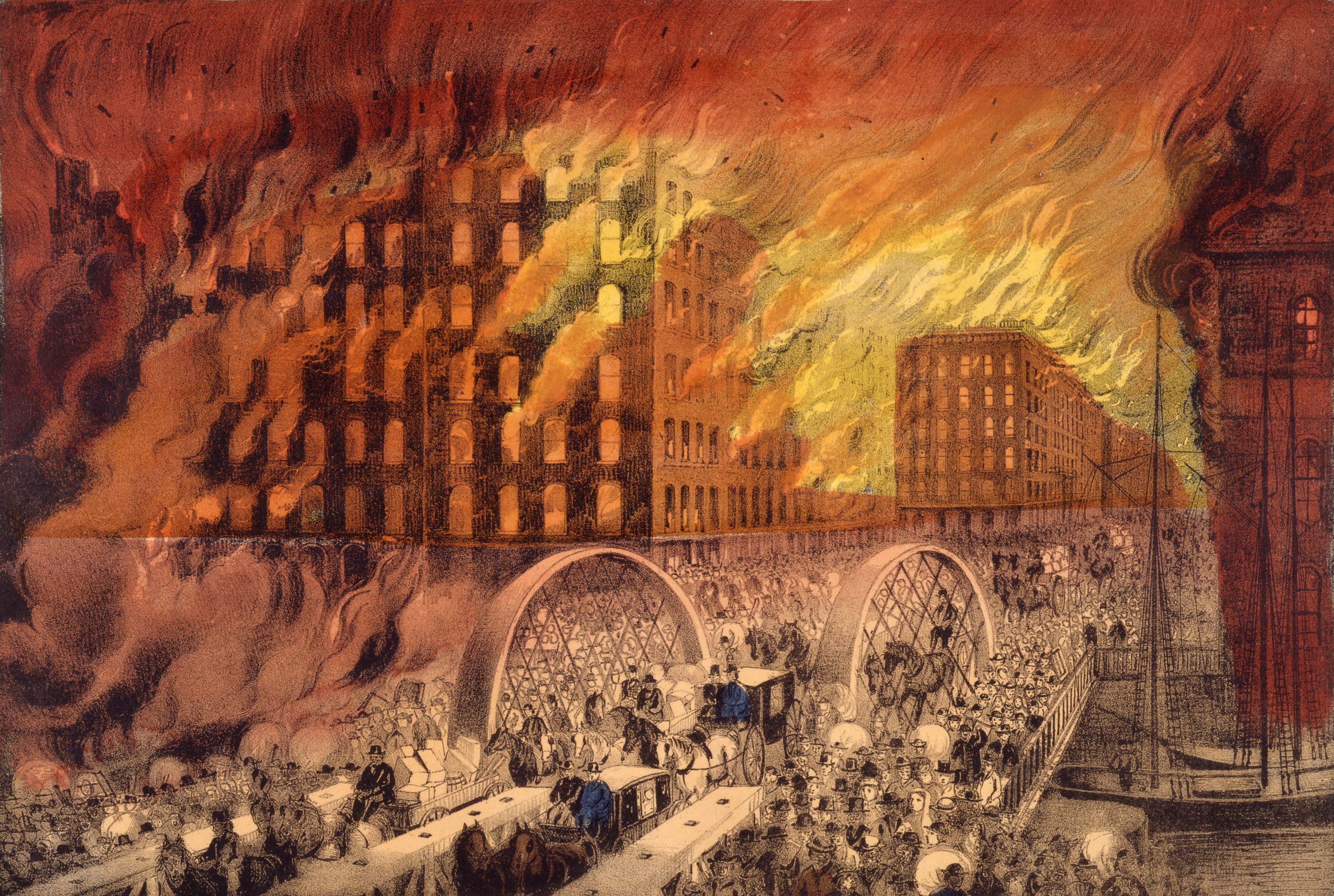Natural disasters, deaths, and raging fires: the world is full of tragedies, and not just the kind you find in Shakespeare plays. Here are 41 Facts about some of the most notable tragedies in history.
Tragedies Facts
41. Drinking the Kool-Aid
In 1978, over 900 members of the People’s Temple Agricultural Project, led by Jim Jones, died in what is now called the Jonestown massacre. These deaths were the result of murder-suicide committed by drinking powdered soft-drink mix combined with cyanide and prescription sedatives. Tragically, many of the group’s members, including at least 89 infants and elderly people, consumed the poisonous mixture.
While many regard the Jonestown deaths as mass suicide, most people don't know that the survivors revealed a dark truth: those that drank the poison actually did so under duress, making the massacre a as mass murder.
40. Don’t Mess With Texas
The deadliest natural disaster in U.S. history was the Galveston hurricane, also known as the Great Storm of 1900. This Category 4 storm hit land in Texas with winds measuring up to 145 miles per hour, resulting in an estimated 6,000 to 12,000 deaths.
39. What’s in a Name
Recent hurricanes to ravage the Caribbean went by the names Harvey, Irma, and Martha. But until 1947, hurricanes and tropical storms did not have official names. That year, the U.S. Air Force started naming them after the phonetic alphabet the military uses to spell out words over the radio. They weren’t consistently given people’s names until the 1950s.
 Department of Defense
Department of Defense
38. No Hurricane Juniors
In the case of a particularly deadly or damaging storm, a hurricane’s name is retired indefinitely.
37. Trouble at Sea
The sinking of the USS Indianapolis in 1945 resulted in the largest loss of life at sea from a single ship in the history of the US Navy. The ship was torpedoed by a Japanese submarine during World War II and sank in twelve minutes. Only 317 of the 1,196 crewmen aboard survived.
 Wikimedia Commons
Wikimedia Commons
36. Sugar Rush
The “panic bar” is the device that allows you to open a door by pushing on a bar. It was invented after an incident at Victoria Hall concert venue in England in 1883. 183 children died in a stampede caused by boys and girls who rushed to get the gifts and treats being handed out by performers onstage. The children who rushed to the door were unable to open the bolt, and many were crushed to death.
35. A Rough Night at the Theater
The deadliest incident in a theater, though, was the Iroquois Theatre fire in Chicago in 1903. More than 600 people died, in part because there were no exit signs and no emergency lighting. Other tragic factors that increased the death toll were ornamental doors that looked like exits (but weren’t), and stairways that were blocked with iron gates during performances to keep people with cheap tickets from taking more expensive seats.
34. Illegal in Ireland
Irish folk singer Christy Moore was found in contempt of court in 1985 for his song “They Never Came Home,” about the victims of a fire at the Stardust nightclub in Dublin. Because the song implied that the nightclub owners and the government were responsible for these deaths, the song was banned and removed from Moore’s album. The song’s lyrics are still banned in Ireland as libelous.
33. Hell in Happy Land
The Happy Land fire might have the most ironic name in the history of mass casualties. This fire killed 87 people at the unlicensed Bronx nightclub in 1990 when Julio González set the building on fire after a fight with his ex-girlfriend, who worked coat-check at the club.

Sign up to our newsletter.
History’s most fascinating stories and darkest secrets, delivered to your inbox daily. Making distraction rewarding since 2017.
32. It Went Over Like a Lead Balloon
The most people ever killed in a balloon accident was 19, when a hot air balloon caught fire over Luxor, Egypt in 2013. The passengers were all tourists on a sight-seeing trip. Along with the pilot, a single passenger survived the incident.
 Pixabay
Pixabay
31. A Rough Couple of Years
The period between 1850 and 1873 in modern-day China saw some of the highest death tolls ever recorded. Between imperialist expansion, the Opium Wars, and the Taiping Rebellion, the population dropped by more than 60 million.
30. You Thought the Snowpocalyspe Was Bad
1816 was known as the Year Without a Summer. The eruption of a volcano at Mount Tambora caused a volcanic winter, and snow fell in June. Severe weather across North America, Europe, and Asia caused famine and flooding, which resulted in food riots and disease outbreaks. Fatality rates were twice as high as in other years.
29. Bad Weather Makes Good Monsters
The Year Without a Summer, however, helped to invent some of our most significant modern monsters. A group of writers including Percy Shelley, Mary Wollstonecraft (later Shelley), and Lord Byron had to stay inside during their trip to Lake Geneva because of the bad weather, and they passed the time with a story-telling contest. This was where Mary Shelley started her novel Frankenstein. Another staycationer, John Polidori, began work on The Vampyre, which eventually inspired Bram Stoker to write Dracula.
28. Armed Forces
While the recent mass shooting in Las Vegas has been called the deadliest in US history, several historical tragedies had higher body counts. White Arkansas men lynched up to 237 black sharecroppers in the 1919 Elaine massacre, the deadliest racial conflict in US history. U.S. troops killed anywhere from 60 to 200 Pomo men, women, and children in the Bloody Island Massacre of 1850; and up to 300 Lakota at the Battle of Wounded Knee in 1890.
27. A Streetcar Named Disaster
The worst subway accident in New York City history happened in 1905, when an aboveground train turned too quickly, jumped the track, and fell onto Ninth Avenue. 13 people were killed. The accident happened, eerily, on September 11th.
 Wikipedia
Wikipedia
27. Mother Nature’s Worst Day
The most people ever killed by a natural disaster may be the Shaanxi earthquake in 1556, in modern-day China. This single event killed 830,000 people.

25. Can You Say La Grippe
The “Spanish Flu” was the name given to an 1918 influenza pandemic that killed 500 million people around the world. The name comes from the fact that, while wartime censors suppressed news of the pandemic in the US, the UK, France, and Germany, the press in Spain was free to report on the tragedy. This gave the world a false impression that Spain was hardest hit by the flu—and the name stuck.
24. Smoke Gets in Your Eyes
Since the 1200s, London has had problems with air quality, but in 1952, a severe air-pollution event called the Great Smog of London blanketed the city with yellow-black smoke for four days, making it hard to see more than a few feet. The city nearly shut down, and the smog resulted in up to 12,000 deaths from lung and respiratory tract infections.
23. Not Just a Cherry Poppin’ Daddies Song
While the 1997 neo-swing single is a fun dance tune, the original Zoot Suit Riots were less light-hearted. The series of attacks on Mexican-American teenagers by white servicemen stationed in Los Angeles in 1943 was ostensibly sparked by the fact that the young men’s flashy suits flaunted wartime fabric rationing, but there were also racial motivations.
22. Just the Hali-Facts
The Halifax Explosion of 1917 occurred when a cargo ship carrying explosives collided with another ship in Halifax Harbour, killing 2,000 people and injuring 9,000. It was the largest man-made explosion prior to the development of nuclear weapons, and the standard by which large blasts were measured for many years.
 Wikipedia
Wikipedia
21. Lucky Number Seven
Time magazine reported on the atomic bombing of Hiroshima in 1945 by saying that the bomb’s power was equivalent to seven times the Halifax Explosion.
20. Our Daily Dead
A famine in Malta in 1823 became even more tragic when 110 hungry boys who went to the Convent of the Minori Osservanti to get free bread on the last day of Carnival celebrations fell down a flight of stairs and were crushed to death.
19. The Luckiest Unlucky Man
Clifford Johnson was injured at the deadliest nightclub fire in history, at the famous Cocoanut Grove in 1942. He suffered third-degree burns over more than half his body but survived, and was seen as a medical marvel. After hundreds of operations and nearly two years in the hospital, he married his nurse. In an ironic twist of fate, he burned to death in a car crash in 1958.
18. Flamin’ Hot Sportsball
Sports teams at the University of Illinois at Chicago are nicknamed the Flames, to commemorate the infamous Great Chicago Fire.
17. Dam Unfortunate
The failure of the Banqiao and Shimantan Dams in China in 1975 killed 171,000—the largest dam-related death toll in history.
 Picryl
Picryl
16. Deadly Defense
In 1871, a lawyer named Clement Vallandigham accidentally shot himself while defending a murder suspect. He was trying to demonstrate that the murder victim could have accidentally shot himself. The client was acquitted, but the lawyer died.
15. The Beheaded Man’s Revenge
A ninth-century Norse earl named Sigurd the Mighty was killed by an enemy he had beheaded hours earlier. He tied the severed head to his horse’s saddle, but on the ride home the man’s tooth scratched his leg. The resulting infection killed the earl.
14. But Not the Last
The first person killed by a robot was Robert Williams, in 1979. The Ford assembly-line worker was hit in the head by a robot’s arm.
13. Dancing in the Dark
400 people in Strasbourg, France were struck by dance madness in the summer of 1518. They were compelled to dance for about a month for no clear reason. Several danced themselves to death.
12. Hands Off
Queen Sunanda Kumariratana of Siam (now Thailand) died when her boat capsized in 1880. Many witnesses stood by, unable to help, because it was a capital offense to touch the queen.
 Shutterstock
Shutterstock
11. Lager Than Life
Eight people were killed in the London Beer Flood of 1814 when a massive vat of fermenting beer burst, filling the streets with over 1,000,000 imperial pints’ worth of beer.
10. High Expectations
An Austrian named Franz Reichelt invented a parachute in 1912 and tested it himself by jumping off the Eiffel Tower. The invention didn’t work, and he died.
9. White Light White Heat
In 1769, lighting struck the tower of the Church of the San Nazaro in Italy, where 207,000 pounds of gunpowder had been stored. The resulting fire killed 3,000 people and destroyed one-sixth of the city.
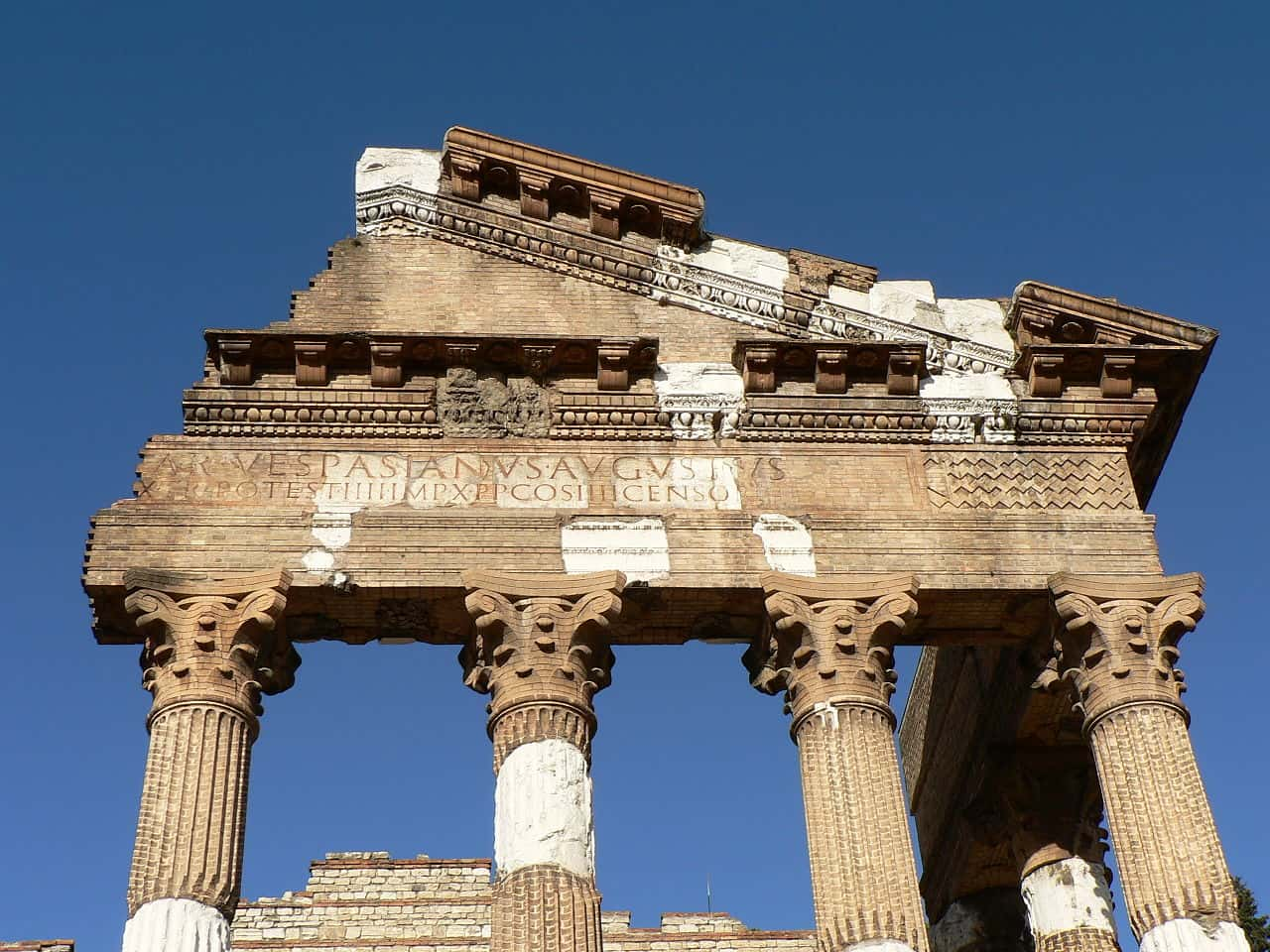 Wikimedia Commons
Wikimedia Commons
8. The Fall of the King
King Albert of Belgium disappeared while rock-climbing in 1934. His body was found, but it wasn’t until 2016 that DNA evidence proved that he died from a fall, putting to bed the conspiracy theories that had existed for decades.
7. A Disarming Crew
Among the people who wrestled the gun away from presidential candidate Robert F. Kennedy’s assassin in 1968 were writer George Plimpton, Olympic gold medal decathlete Rafer Johnson, and former New York Giant Rosey Grier.
 Shutterstock
Shutterstock
6. Aftermath in Ohio
Immediately following the shootings at Kent State University in 1970, when the National Guard fired at and killed four anti-war protestors, 900 university campuses had to be closed due to protests. 100,000 people rioted in Washington, DC, President Nixon was evacuated to Camp David, and the 82nd Airborne was deployed to protect the White House.
5. Unlikely Advocate
When the British soldiers who killed colonists in the Boston Massacre during the American Revolution were tried in court, their lawyer was none other than John Adams, founding father and future president. After being convinced by the court to take the case, Adams persuaded the jury that the soldiers had feared for their lives, reducing the charge to manslaughter.
4. In Your Heeeeeead
The Cranberries song “Zombie” was written in memoriam for two young boys who were killed in a 1993 bombing by the Irish Republican Army in Warrington, England.
3. It Actually Is Rocket Science
Designers of the parts for the Challenger space shuttle, which exploded in 1986, warned that the shuttle shouldn’t have been launched because a seal could come loose in cold weather. NASA officials disregarded the warning, with one asking, "When do you want me to launch—next April?"
2. Survivor
Imagine the odds of being struck by lightning twice. Pretty rare. I'm sure if that happened to you, you'd think you must have been cursed by some sort of vindictive witch.
So imagine the confusion and suffering of Tsutomu Yamaguchi, a Japanese man who survived the bombing of Hiroshima... only to move to Nagasaki and experience that bombing as well.
The torment he must have experienced is beyond belief.
 GettyImages
GettyImages
1. Situation Twenty-One
At the Munich Olympic Games in 1972, a group of armed Palestinians broke into the apartment of Israeli athletes, killing two and taking the rest hostage. The Palestinians then demanded the release of 236 prisoners and a plane to fly them to Cairo. Nearly every detail of this scenario had been foreseen by police psychologist Georg Sieber, who the German government had tasked with coming up with possible Olympic disaster scenarios. Sieber had 26 scenarios; the 1972 events were Situation Twenty-One.
Sources: 1, 2, 3, 4, 5, 6, 7, 8, 9, 10, 11, 12, 13, 14, 15, 16, 17, 18, 19, 20, 21, 22, 23, 24, 25, 26, 27, 28, 29, 30, 31, 32, 33, 34, 35, 36, 37, 38, 39, 40, 41, 42, 43, 44




